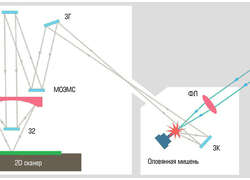rigoletto@
Developer
CPU Elbrus – the Russian Intel and our last hope...
View: https://www.youtube.com/watch?v=-ojbRZnJkJo
Seriously gotta try that substance some day ??Neither Linux OS (nor linux kernel build scripts these days) nor FreeBSD are suitable tools for Cross Compiling. If they were then doing certain cross compiles "would be an option" yet there is no option.
I'm not allowed to discuss it (Sir Dice? or who? would IP block me). But I've tried cross-compile linux - it's ability is destroyed for "typical hobbyists" (i'm not allowed to say how) and similar new management has put "CLANG" as the only compiler in FreeBSD which itself admits "it has no way to compile itself without the system it was compiled upon running it - and there again it can only compile the same version" (without massive difficulties) - which i've also tried. (more than one BIG TECH company is involved and at least one of makes cross compilers "that work with one click, and must be bought" - hopefully i've not said too much to swallow)
My advice is don't. By the time you finish BIG TECH will have made everything altered and irrelevant as it does in (let's say a planned manner).
Hi Debguy, bye Debguy.I'm not allowed to discuss it (Sir Dice? or who? would IP block me).
About $521.52 USD or 459.71 euro... Right on par with some of the cheaper Threadripper boards.DJs3000, can you please contact me on arrowd@freebsd.org ?
SleepWalker, what you basically need is just 40k rubles to buy this: https://www.chipdip.ru/product/bfk3.1
Maybe we can arrange a crowdfunding, I'll hapilly donate.
Aparently, Baikal BE-T1000 is 28nm and IIRC Russia have a 28nm fab. [EDIT] But yeah, it seems they are working with TSMC.About $521.52 USD or 459.71 euro... Right on par with some of the cheaper Threadripper boards.
--
eurohick2 : This project is most likely aimed at the Russian market, rather than the global one. TSMC is probably only too happy to have a customer or two for some of its under-utilized fab capacity.
at least they have a cool 404 pageAparently, Baikal BE-T1000 is 28nm and IIRC Russia have a 28nm fab. [EDIT] But yeah, it seems they are working with TSMC.
Correction, based on early 2021 information the 28nm fab is being deployed yet.

Hot new popular idea that products and technologies have to [exist and be made] in Russia, especially on par with the rest of the world, that's irritating to no end.
This is the same crowd that never learned to mask up after 3 years, sitting around the kitchen table and complaining how the country has shortchanged them. Hella unique people.
What, there are posts after 23.02.22 there? It's dead in the water, guys.
You found a dedicated English-language vatnik forum? Impressive. Not in a good way, mind you.
You see, Elbrus is not really intended to be used in the military or industrial hardware, it's designed as a server/workstation processor. It wasn't really competitive at all in that niche at the TSCM 28 nm process and it certainly won't fare better if MCST backports it to some domestic 65+ nm process. This would probably give us an equivalent of Raspberry Pi Zero performance. Might as well just buy those from China.
Elbrus processors are used in military hardware (including radars) and weapon systems since years[1], there is no need to use the latest processor in those appliances. Not ever 45nm is generally necessary but 90nm is more than enough. IIRC Elbrus-2SM is the most used one in the latest systems.You found a dedicated English-language vatnik forum? Impressive. Not in a good way, mind you.
You see, Elbrus is not really intended to be used in the military or industrial hardware, it's designed as a server/workstation processor. It wasn't really competitive at all in that niche at the TSCM 28 nm process and it certainly won't fare better if MCST backports it to some domestic 65+ nm process. This would probably give us an equivalent of Raspberry Pi Zero performance. Might as well just buy those from China.
I'm not a fan of military applications, but even Uncle Sam relies on COBOL and IBM mainframes to run the COBOL programs. A lot of times, the reason for not upgrading is because the old fart in charge of EVERYTHING has a lot of distrust in "Dem newfangled things", and will not be swayed, even with concrete evidence that flies in the face of that behavior. And then other old farts are pulled out of retirement so that they can tell you how to run rusty 50-year-old equipment. Those consultants are probably half blind, and unable to remember what they had for breakfast, but they will be able to recall instruction manuals from 50 years ago. ?

Also, the process for getting new components (say for example, a new processor and platform) certified for use is both time-consuming and very expensive. So often it is cheaper to just go with the existing solution for as long as you can, even if it gets more expensive as time goes on.I'm not a fan of military applications, but even Uncle Sam relies on COBOL and IBM mainframes to run the COBOL programs. A lot of times, the reason for not upgrading is because the old fart in charge of EVERYTHING has a lot of distrust in "Dem newfangled things", and will not be swayed, even with concrete evidence that flies in the face of that behavior. And then other old farts are pulled out of retirement so that they can tell you how to run rusty 50-year-old equipment. Those consultants are probably half blind, and unable to remember what they had for breakfast, but they will be able to recall instruction manuals from 50 years ago. ?
